Fin Whales
Balaenoptera physalus
By: A. H. Kopelman, Ph.D.
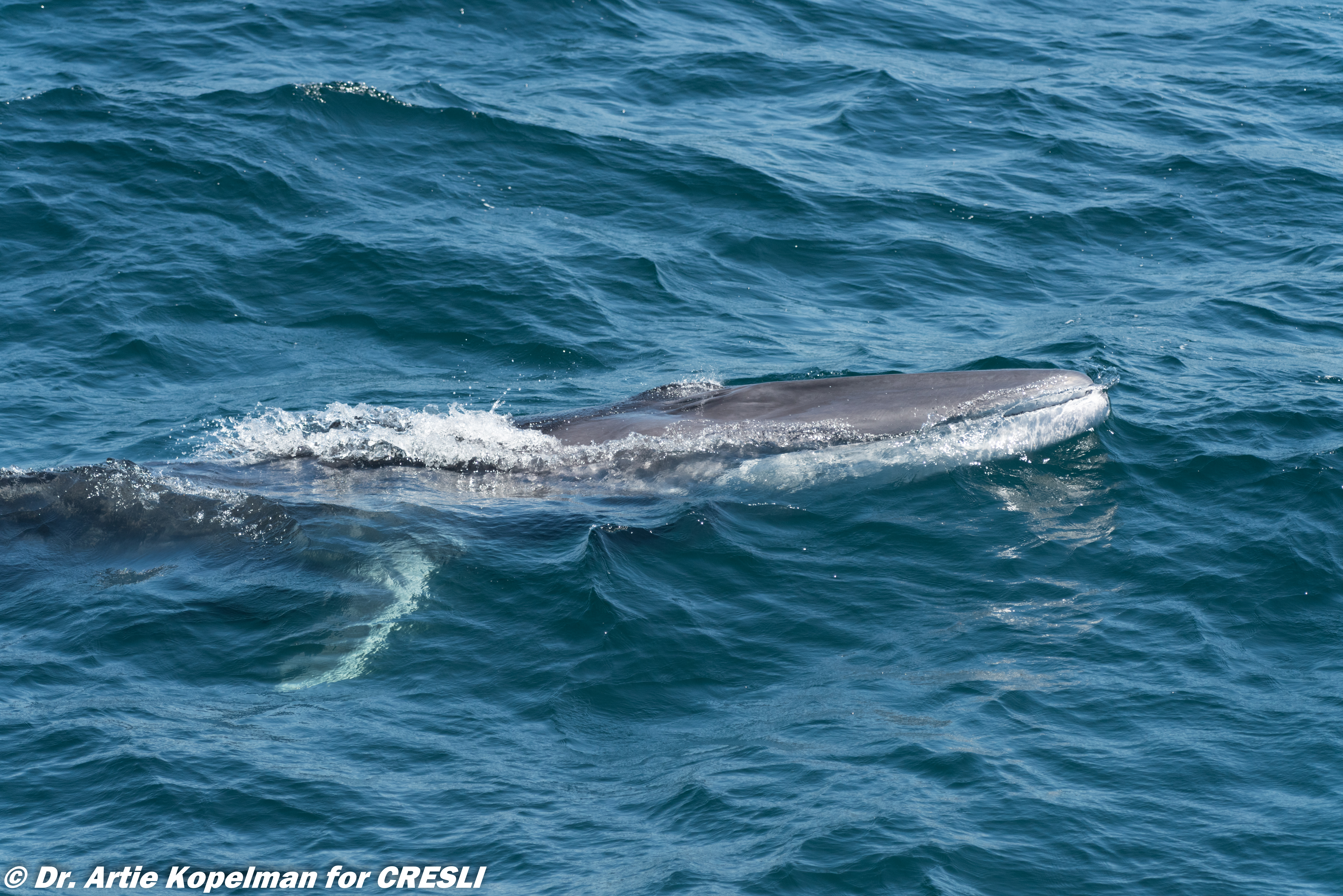
Fin whale (Balaneoptera physalus)
Fin whales are the second largest species of whale and the second largest animal ever to have lived. Fin whales (also know as finback whales) can reach lengths of over 85 feet and weights of more than 170,000 lbs in the northern hemisphere and over 90 feet and 180,000 lbs in the southern hemisphere and are distributed around the world except for the tropics, i.e., they have an antitropical distribution.
- Fin whales are listed as endangered throughout their range in the Endangered Species Act.
- In November 2018, the status of fin whales on the IUCN redlist, with an estimated global population of 100,00 adults, was changed from Endangered to Vulnerable!
- The NOAA Fisheries 2021 Stock Assessment Report (SAR) for the Western North Atlantic fin whale, states that the "best abundance estimate available for the western North Atlantic fin whale stock is 6,802 (CV=0.24)."
To date (2023), CRESLI had identified 188 different fin whales in the waters off Montauk since 2009.
Fin whales feed on a wide array of prey species, depending upon availability, ranging from small schooling fish such as sand eels, herring and tinker mackerel, to crustaceans such as krill and copepods, to squid. A variety of feeding techniques are employed in order to concentrate prey, essentially fin whales are "gulpers," taking in large quantities of food and water in each mouthful.
Fin whales are extremely fast, sleek, muscular whales, sometimes referred to as "the greyhounds of the sea" because of the great speed that they can reach (>25 knots).
Fin whales get their name from the very prominent and falcate (curved) dorsal fin, situated around 2/3 of the way back from the head. There are 6 different dorsal fin shapes and we use them to help identify individuals.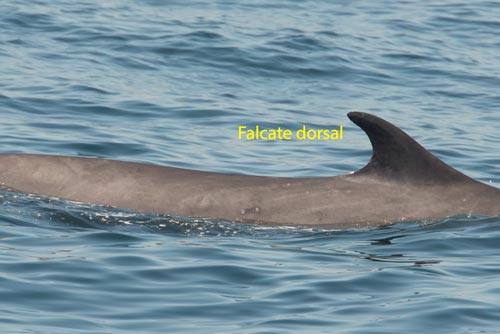
Fin whales a lightly-colored area on the right side of their heads called a blaze. Posterior to the blaze is a dark eye-stripe, and inter-stripe wash (lightly colored), and dark ear stripe. Posterior to the blaze and stripes, there is a distinctive V-shaped pattern of coloration around their head called the chevron. Dorsal fin shape, chevron and blaze patterns, and scars can be used to identify individuals.
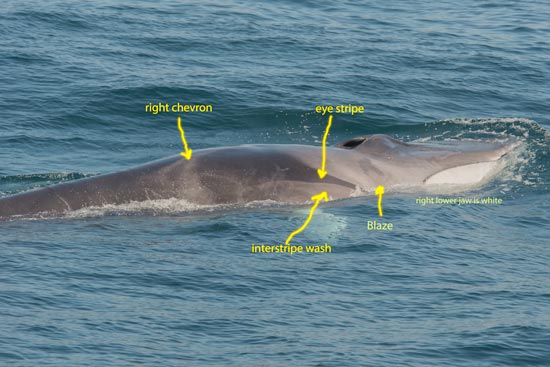
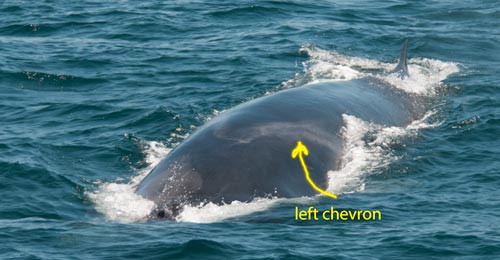
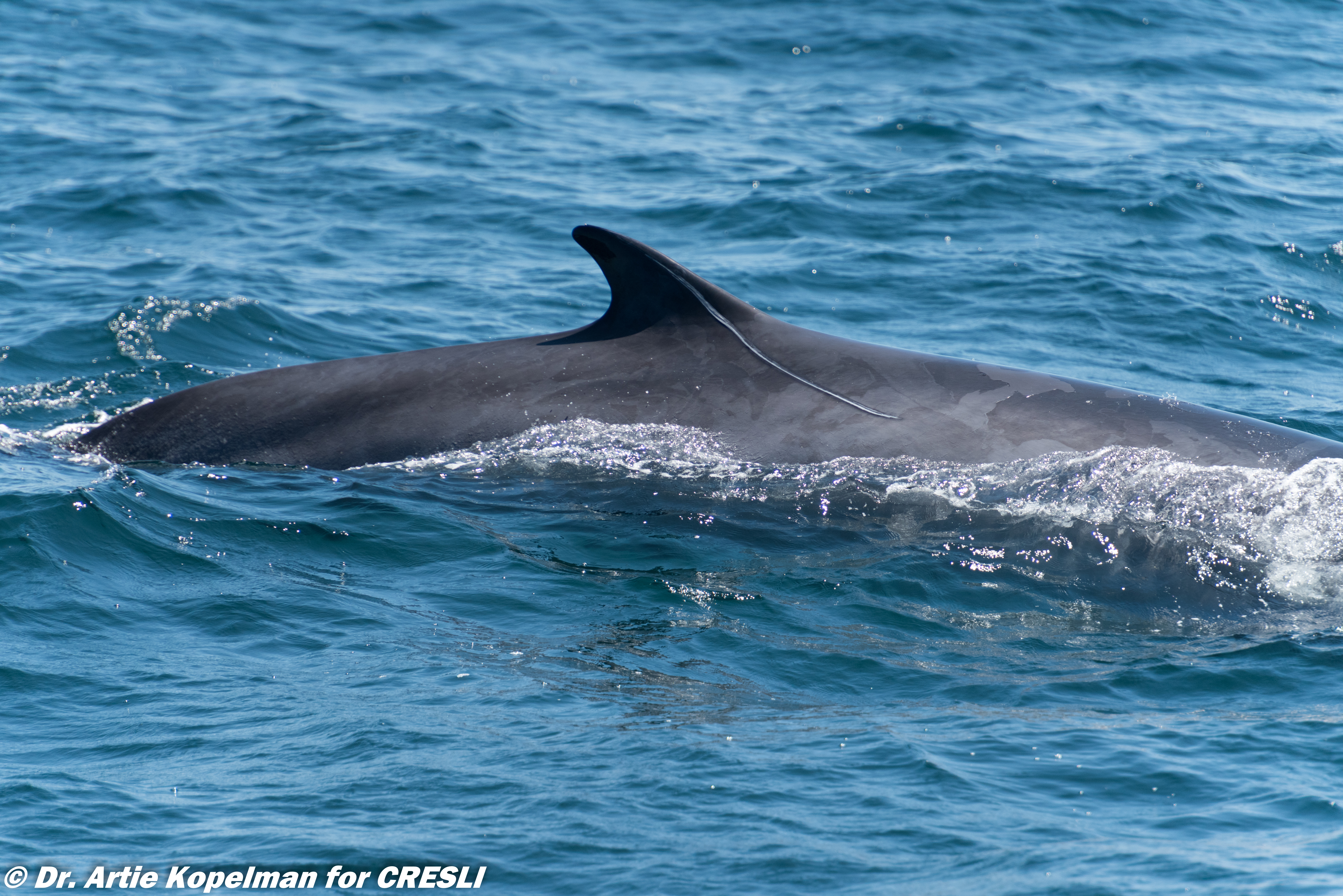
The age of first reproduction for female fin whales is 10 year of age. The interbirth interval is 2.24 years. Fin whale age of last reproduction is 62 years of age. The maximum lifespan of fin whales is approximately 100 years.
Fin whales have asymmetrically colored jaws and baleen plates. The right side lower jaw and the baleen on its tip are white, while the left side are dark. This pattern can be seen occasionally in minke whales (Balaenoptera acutorostrata), but EVERY fin whale exhibits this asymmetry. Although there are many hypotheses, we still have no definitive idea as to the function of the asymmetrical coloration.

The ventral surface of the body, flukes, and flippers are white, and the rest of the body is dark gray to brown.
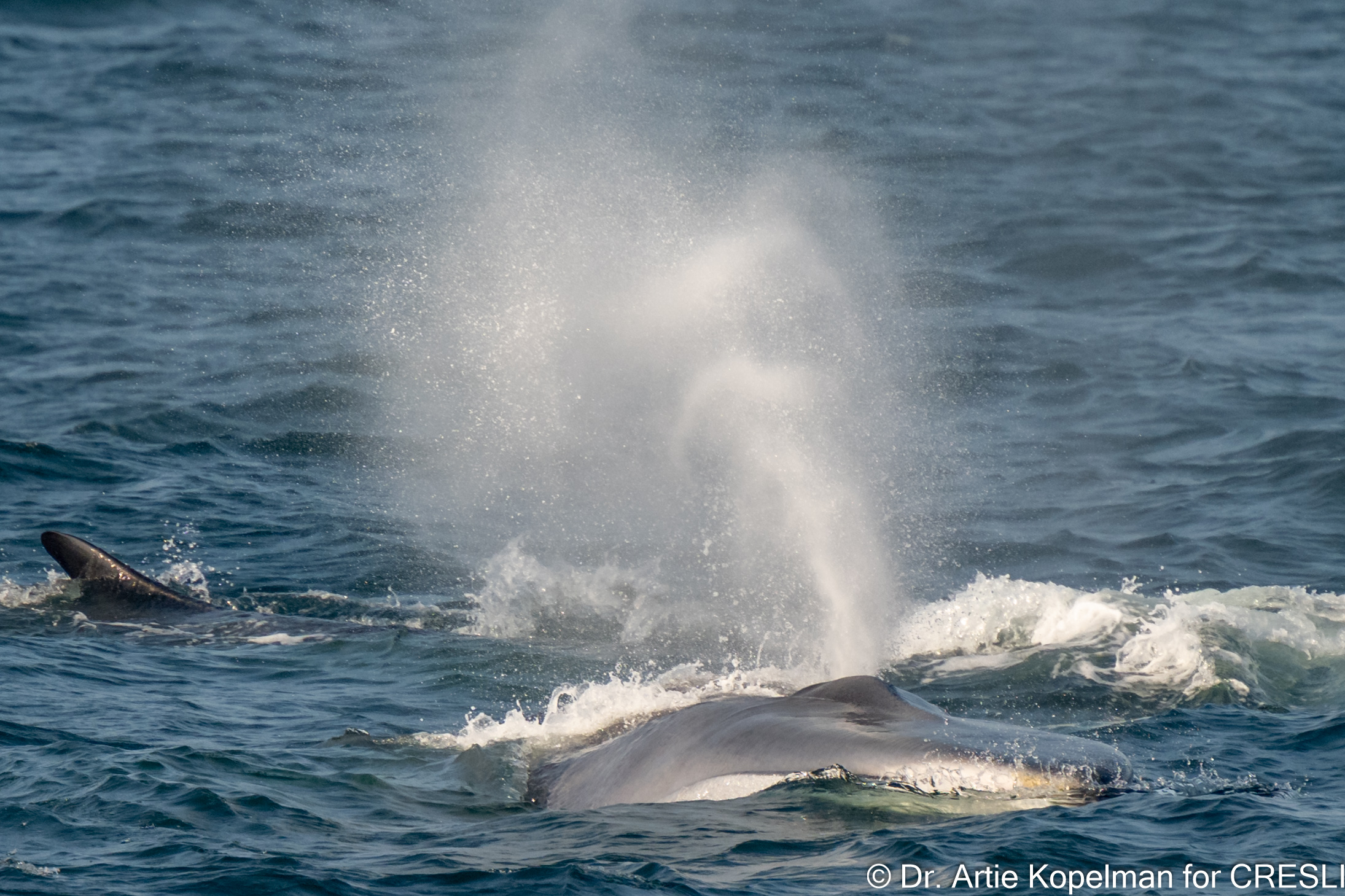
Calf (front) and mom (back) fin whale, July 26, 2023
Let the authorities know - report strandings!
It is critically important to immediately report any sightings of injured or stranded whales (dead or alive). In NY, call the NY Stranding hotline 631-369-9829. Elsewhere in the In the United States, make a report by calling the Greater Atlantic Marine Mammal Stranding Hotline at (866) 755-6622 or the Southeast Marine Mammal Stranding Hotline at (877) 433-8299. You can also contact the U.S. Coast Guard on VHF Channel 16. Do not approach injured or dead animals.

RELATED DOCUMENTS
2021 Western North Atlantic Fin Whale Stock Assessment ReportOffshore Wind and Whales-TWG final





